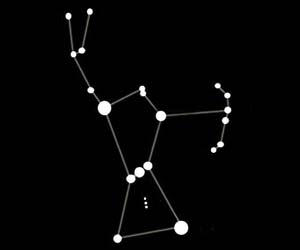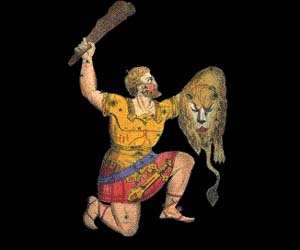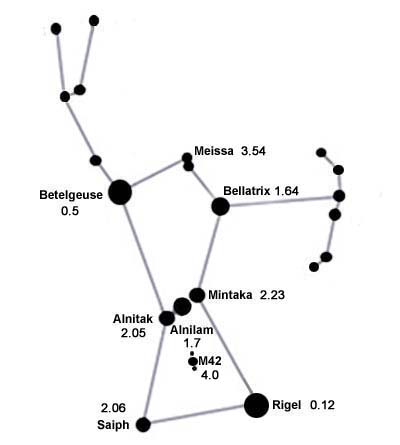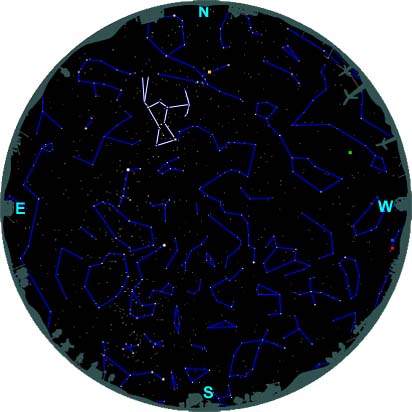Orion Constellation Facts

The constellation of Orion, one of the most familiar constellations in the night sky.
- Orion is visible in both the Northern and Southern hemispheres.
- In the Northern hemisphere the constellation can be seen from late autumn to early spring.
- In the Southern hemisphere Orion can be seen in the summer months, note that it will appear upside down.
- The constellation mainly consists of bright blue supergiant stars, the most notable exception being the red supergiant Betelgeuse which lies on Orion's shoulder.
- Betelgeuse is also the largest star in the constellation, it has 1,000 times the radius of the sun.
- The brightest star in the constellation is Rigel, which is 40,000 times brighter than the sun and emits 100,000 times the energy.
- The three stars which form a line through the middle of the constellation are known as Orion's Belt.
- If you follow an imaginary line down through Orion's Belt it will take you to the brightest star in the night sky, Sirius, follow the line up in the southern hemisphere.
Orion Mythology

Orion from Greek mythology, holding a lion pelt in his left hand.
Main Stars in the Orion Constellation

The number next to each star is its apparent magnitude, its brightness from our point of view
on Earth, the lower the number the brighter the star in the night sky.
A red supergiant star around 640 light years from Earth, Betelgeuse, also known as Alpha Orionis, has a radius 1,000 times larger than the sun and is expected to explode as a supernova in the next million years. Meissa
A blue giant star with surface temperatures around 5 times hotter than our sun, Meissa is actually a pair of binary stars, its companion is similar in size and mass to the sun. Bellatrix
A blue giant star around 250 light years from Earth, Bellatrix is 6 times larger than our sun and 8 times more massive, the star is also known as Gamma Orionis. Alnitak
Alnitak is a triple star system around 736 light years from Earth, the primary star is a blue supergiant star with a radius around 20 times larger than the sun, Alnitak is also known as Zeta Orionis. Alnilam
A blue supergiant star around 1,400 light years from Earth, Alnilam is 24 times larger than the sun and more than 250,000 times as luminous, the star is also known as Epsilon Orionis. Mintaka
Also known as Delta Orionis, Mintaka is actually a pair of blue giant stars with the largest having 16 times the radius of the sun, both stars are around 100,000 times more luminous than the sun. Saiph
A blue supergiant star around 650 light years from Earth, Saiph is 16 times more massive and around 22 times larger in diameter than the sun. Rigel
Also known as Beta Orionis, Rigel is around 800 light years from Earth and is the brightest star in the constellation, once again like most of the others it is a blue supergiant around 75 times larger in diameter than the sun and around 40,000 times brighter. M42
Perhaps the most interesting component of the Orion constellation, M42 is not a star but is in fact the Orion nebula, a vast star forming region some 1,500 light years from Earth, the nebula makes up the sword of Orion along with two other stars. The Orion nebula has an apparent magnitude of 4.0, making it easily visible with the naked eye apart from those living in an around the center of large cities.
Finding Orion - Northern Hemisphere

Finding Orion - Southern Hemisphere
